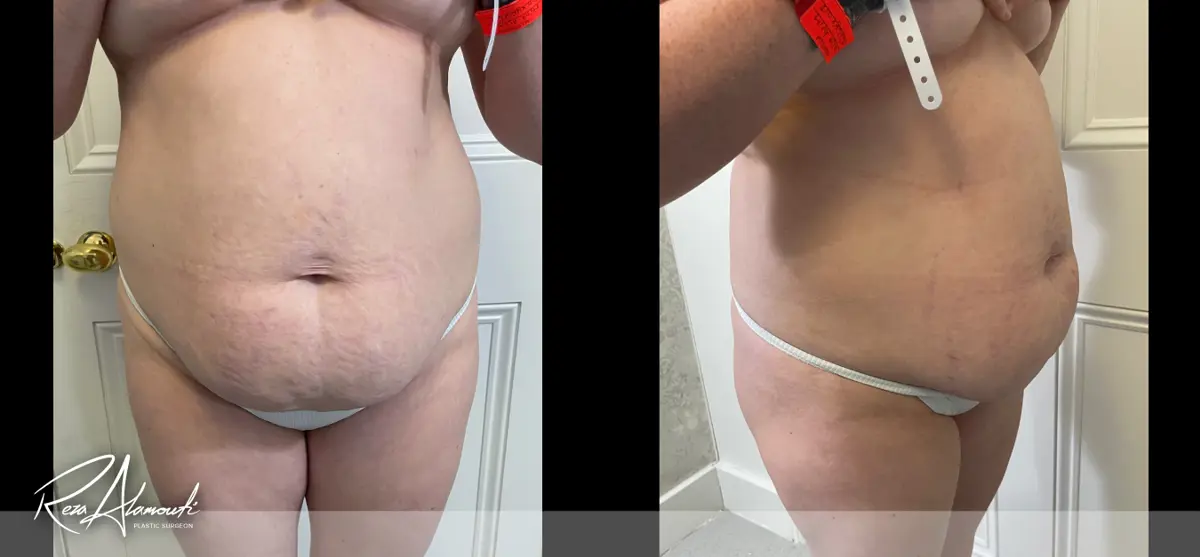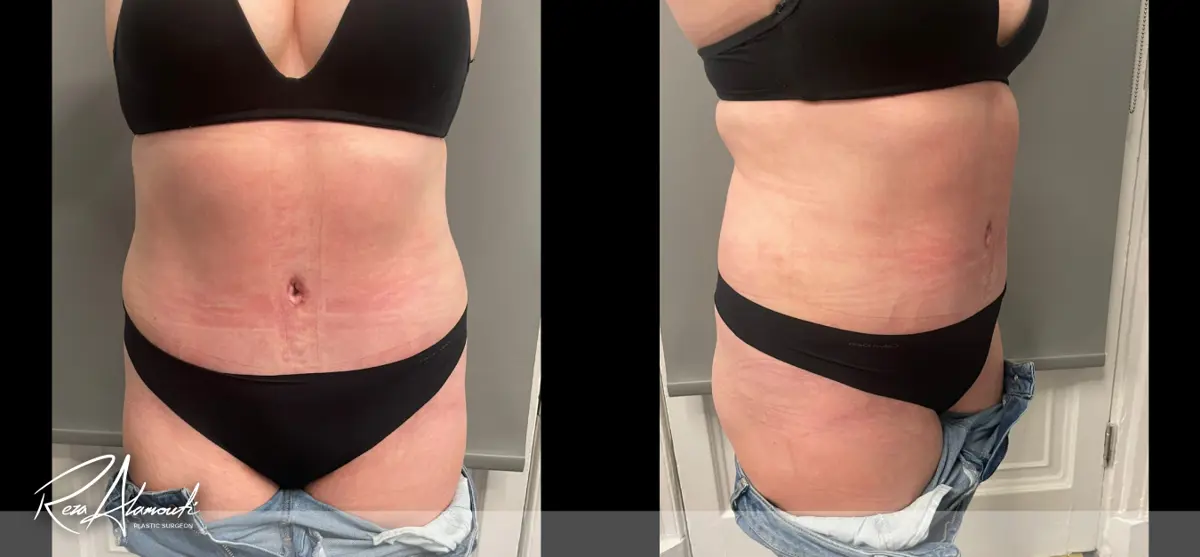

Abdominal Separation: How a Tummy Tuck Can Fix Diastasis Recti
Diastasis Recti can be a frustrating and uncomfortable condition, Fortunately, there is a solution. A tummy tuck can help in several ways.
Diastasis Recti can be a frustrating and uncomfortable condition, Fortunately, there is a solution. A tummy tuck can help in several ways.
Are you experiencing a bulge in your abdomen that doesn't seem to go away, even with diet and exercise? Perhaps you also experience lower back pain or discomfort in your core muscles? If so, you may have a condition called Diastasis Recti. Diastasis Recti can be a frustrating and uncomfortable condition, it occurs when the abdominal muscles separate due to pregnancy, weight gain, or ageing. Fortunately, there is a solution.
In this blog post, we'll explore how a tummy tuck can help to repair separated abdominal muscles, remove excess skin and fat, and improve the overall appearance and function of your core.
Keep reading to learn more about this life-changing procedure and how it can help you regain your confidence and quality of life.
Diastasis recti is caused by separation of the rectus abdominis muscles, which run vertically down the middle of the abdomen and are responsible for maintaining both core stability and supporting the spine. This separation can occur when the connective tissue that holds the muscles together is stretched or weakened, allowing the muscles to pull apart. This causes the belly to stick out, especially when sitting up or standing, as well as lower back pain and discomfort in the core muscles.
Having Diastasis Recti is not necessarily "bad" in the sense that it is not a serious medical condition that can lead to serious complications. However, it is uncomfortable and causes aesthetic concerns for some people. In addition, if the separation of the abdominal muscles is severe enough, it can lead to problems with posture and core stability leading to lower back pain. So, it can impact a person's quality of life and may warrant treatment if causing significant discomfort.
The symptoms of diastasis include:
• Back pain
• Poor posture
• Protruding belly
• Difficulty lifting objects
• Constipation (lazy bowel syndrome) • Loss of bladder control
Conservative management involves strengthening the core muscles and weight management, however, many experts agree that surgery is the best line of treatment to fully correct the issue. Muscles can be tightened and brought back to the anatomical position during tummy tuck surgery, and this is something Mr. Alamouti has accomplished many times before.
Mr. Alamouti is a leading Consultant Plastic and Reconstructive Surgeon who specialises in aesthetic body contouring procedures. After qualifying medicine in the year 2000, Mr. Alamouti trained at several renowned plastic surgery units, including St Thomas’. He also obtained a
masters degree in Reconstructive Microsurgery from the University of Barcelona and a Master of Science in Aesthetic Surgery from Queen Mary University in London.
He is on the GMC specialist register for plastic surgery and continues to perform reconstructive surgery in the NHS. His specialist interests include aesthetic breast surgery, body contouring and Hi-def Liposculpture.
Mr. Alamouti is an experienced Surgeon with a reputation for exceptional precision, lasting results and a calm and empathetic manner.
As previously mentioned, the most common causes of diastasis recti are pregnancy, weight gain, and ageing. In addition, other risk factors can increase the likelihood of developing this condition, such as having multiples (twins, triplets, etc.) during pregnancy or repeated pregnancies, being over the age of 35, having a history of abdominal surgery.
Pregnancy - In pregnancy, the abdominal muscles stretch to accommodate the growing baby, and sometimes they don't fully return to their pre-pregnancy state.
Weight Gain - Rapid weight gain or carrying excess weight can also put stress on the abdominal muscles and cause them to move apart.
Ageing - As we age, the connective tissue in our bodies can become weaker and less resilient, which can contribute to diastasis recti.
Poor posture - Slouching or other postural habits that place stress on the abdomen can contribute to the development of diastasis recti.
Intense or improper exercise - Certain types of exercises that place a lot of pressure on the abdominal muscles, such as crunches or sit-ups, can exacerbate or even cause diastasis recti if they are not done correctly.
A tummy tuck, also known as abdominoplasty, is a surgical procedure that can help address diastasis recti. During the procedure, the surgeon will make an incision in the lower abdomen which will allow them to access the abdominal muscles. The muscles will then be stitched together to repair the separation, which tightens and strengthens the core. If there is excess skin and fat, the surgeon will also remove this tissue to create a flatter and more toned appearance.
The procedure typically takes a few hours, and the patient will need to take time off work and avoid strenuous activities during the recovery period.
If you're considering a tummy tuck to address diastasis recti, it's important to know if you're a good candidate for the procedure. This would be someone who is typically in good overall health and has realistic expectations about what the procedure can achieve. It's important to have a
consultation with a qualified plastic surgeon to determine if a tummy tuck is the best option for addressing diastasis recti for you.
Many of Mr. Reza Alamouti's patients attest to his exceptional skills and bedside manner. In addition, his surgical techniques have been shown to produce consistently excellent results, with high patient satisfaction rates. By combining his technical expertise with his compassionate approach to patient care, Mr. Reza Alamouti has earned a reputation as one of the top surgeons for this procedure in London.
Yes, there would be a transverse scar on the lower abdomen and around belly button which fades with time.
Results can be long term as long as a stable weight is maintained.
It depends on the profession, but most people can go back to work 2-3 weeks after the procedure.
Yes. Mommy makeover is a combination of tummy and breast procedures to address multiple areas. The advantage is one general anaesthesia and recovery time. We can also combine it with Vaser Liposuction.
If you're struggling with diastasis recti, a tummy tuck may be just the solution you're looking for. By repairing the separated abdominal muscles and removing excess skin and fat, a tummy tuck can create a flatter and more toned appearance in the abdomen.
If you’re interested in getting your core back in shape with Mr. Alamouti, or simply wish to find out more, don’t hesitate to get in touch by calling or using the contact form below. We look forward to hearing from you!



